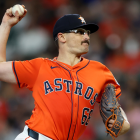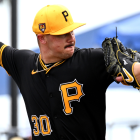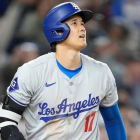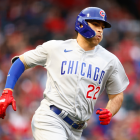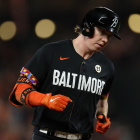
Major League Baseball's regular season is now more than a month old. Every team has played at least 23 games, or 14 percent of its schedule. In other words, it's that time of the year when people start wondering, is their team's seemingly overperforming player for real? After all, the most satisfying breakouts are those that come from unexpected sources.
For an example, take Seattle Mariners first baseman Ty France. He never made a top-100 prospect list, and he instead profiled as a utility infielder. When he was included in the Austin Nola trade at the 2020 deadline, it was as an afterthought. Yet France has since emerged as a major win for Seattle, batting .297/.371/.452 (132 OPS+) with 25 home runs and 6.1 Wins Above Replacement in 203 games.
This week, we'll examine six players -- three hitters today and three pitchers in a few days -- who are off to surprisingly good starts this season. In each instance, we've attempted to answer the question: are they for real? Let's start with the three hitters.
1. Taylor Ward, Angels
Mike Trout entered Sunday trailing a teammate for the major-league lead in wRC+, FanGraphs' catch-all offensive metric that adjusts for ballpark and other variables. Trout wasn't behind Shohei Ohtani, or even Anthony Rendon; he was looking at the taillights of Taylor Ward, a 28-year-old who entered this season with a .230/.305/.388 slash line in more than 500 career big-league plate appearances.
Ward won't continue to hit at this rate, but there are underlying indicators suggesting he's an improved hitter compared to when he produced the above line.
TAYLOR WARD GOES OVER THE MONSTER 😤
— SportsCenter (@SportsCenter) May 5, 2022
(via @Angels)pic.twitter.com/SSkVQDL37t
For starters, Ward is showing a more disciplined approach, swinging and chasing less often than before. He's also pulling the ball more frequently, with 45 percent of his batted balls heading to left field, as opposed to just 36 percent last season. Normally, you'd expect that shift to be accompanied by better power numbers; that's not the case here. Ward's raw exit velocity numbers aren't overly impressive, as he ranks in the 46th percentile for balls hit at least 95 mph. He atones for that by ranking in the 90th percentile for balls launched between 10 and 30 degrees. That combination rivals the likes of Bryan Reynolds, George Springer, Nolan Arenado, and Freddie Freeman. That's good company.
Again, we don't expect Ward to continue to outhit Trout. His increased selectivity and his feel for hitting the ball at a good angle lends credence to the idea that he should remain an above-average hitter moving forward, perhaps even making him this year's version of Jared Walsh.
2. Sheldon Neuse, Athletics
Sheldon Neuse (that's pronounced "noisy") has bounced around a fair amount in his career. He was originally drafted by the Washington Nationals before being sent to the Oakland Athletics in the Sean Doolittle and Ryan Madson trade. (That deal also netted the Athletics Blake Treinen and Jesús Luzardo.) Neuse was then traded again in February 2021, this time to the Los Angeles Dodgers. He appeared in 33 games with the Dodgers, hitting for a .505 OPS and posting a 26-to-1 strikeout-to-walk ratio. Yuck.
Neuse again found himself with the Athletics this spring after being claimed off waivers in March, and he's since hit himself into the regular lineup, albeit while ping-ponging between first and third base.
Make some Neuse 🗣️ pic.twitter.com/j0Myzy6B6s
— A's on NBCS (@NBCSAthletics) April 30, 2022
Neuse has hit the ball hard on a consistent basis, with his percentage of batted balls traveling 95 mph or greater rivaling top-end hitters like Juan Soto, Paul Goldschmidt, and Michael Brantley. The catch is that Neuse's game isn't optimized to turn that strength into big-time power numbers. His average launch angle is around 5 degrees, and only Wil Myers has hit a higher percentage of his balls to the opposite field.
Zipping the ball to right field has worked out fine for Neuse so far, but it's not the game plan you would have imagined from someone whose carrying tool as a prospect was his raw power. We'd like to see it work for a while longer before we buy in.
3. Santiago Espinal, Blue Jays
We'll conclude with Santiago Espinal, who has seized the second-base job as his own up in Toronto. Along the way, he's validated the preseason hype about his added strength.
Espinal's average exit velocity is way up, from 84.4 mph to 88.8 mph, and he's nearly doubled the percentage of batted balls he's struck 95 mph or harder (up to 41.7 percent).
“Get the jacket ready!” - Santiago Espinal, probably. pic.twitter.com/HUdvZpVkWU
— Sportsnet (@Sportsnet) April 23, 2022
Espinsal is elevating the ball more, too, leading to a higher average launch angle and a greater share of balls hit between 10 and 30 degrees. He's accomplished all that without radically impacting his approach. He's swinging less often and whiffing more, albeit not enough to cause any concern about his strikeout rate.
There's sufficient reason, then, to think Espinal will keep hitting at a good clip.





















